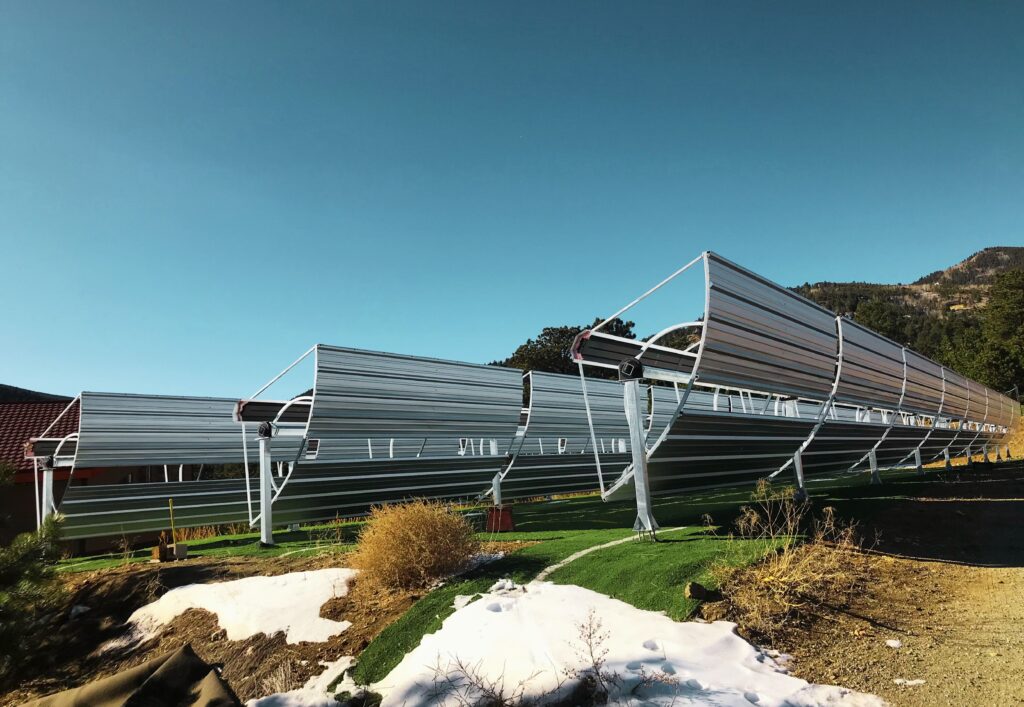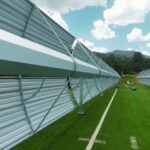
Reverse Osmosis vs Thermal Desalination: Which is Better for Water Desalination?
When it comes to the leading technologies in the field of desalination, comparing reverse osmosis vs thermal desalination highlights two distinct approaches to obtaining fresh water from seawater, each with its own strengths and application.
Water scarcity is a global challenge that continues to grow in intensity. As the demand for freshwater continues to rise, driven by factors like population growth, urbanization, and industrial development, the oceans and saline groundwater have become increasingly attractive alternative sources.
In this article, we delve into two key desalination techniques, offering a clear comparison between reverse osmosis vs thermal desalination. By defining each method and highlighting their differences, we aim to provide a comprehensive understanding of how these technologies work and what they have to offer.
What is Reverse Osmosis?
Reverse osmosis is a membrane-based desalination technology that involves pushing saline water through a semi-permeable membrane, which selectively allows water molecules to pass through while trapping salts, minerals, and other contaminants.
How does Reverse Osmosis work?
The core of the reverse osmosis system is the membrane, a critical component that allows water molecules to pass through while blocking salt and other impurities.
This process requires significant pressure, typically achieved by high-powered pumps. The freshwater is collected on one side of the membrane, while the highly saline brine is discharged or further treated.
- Pretreatment: Before entering the reverse osmosis system, seawater undergoes a pretreatment stage to remove larger particles, debris, and potentially harmful substances.
- Pressurization: The pretreated seawater is then pressurized to a level that enables it to overcome the osmotic pressure and pass through the semipermeable membrane.
- Membrane Separation: The pressurized seawater is introduced to the reverse osmosis membrane, where the water molecules pass through the membrane, leaving behind the majority of salts, minerals, and impurities.
- Product and Brine Streams: The separated water, now purified, constitutes the product water, while the concentrated brine containing the rejected impurities is directed to a disposal system.
Related topics: NET ZERO SOLAR THERMAL SOLUTIONS: What you need to eliminate your farming hot water bill!
Advantages of Reverse Osmosis
- Energy Efficiency: Reverse osmosis consumes less energy compared to many thermal desalination processes, especially when operating at smaller scales.
- Scalability: Reverse osmosis systems can be easily scaled to match water demands, making them suitable for both small and large desalination plants.
- Cost-Effectiveness: With advancements in membrane technology, the cost of reverse osmosis desalination has decreased, making it more affordable for large-scale applications.
Challenges of Reverse Osmosis
- Membrane Fouling: Over time, membranes can become clogged with contaminants, requiring regular cleaning and maintenance.
- Pretreatment Requirements: this type of system often require significant pretreatment to remove suspended solids and chemicals from seawater.
- Brine Disposal: The highly concentrated brine left after the desalination process poses an environmental challenge, as it can harm marine ecosystems when discharged improperly.

What is Thermal Desalination?
Thermal desalination, on the other hand, relies on the principle of phase transition to separate water from salts and impurities. In this process, seawater is heated to create steam, which is then cooled and condensed back into liquid form, leaving behind the salts and minerals.
The Thermal Desalination Process
- Heating: Seawater is subjected to heat, causing it to vaporize and form steam.
- Condensation: The steam is then cooled and condensed back into liquid form, resulting in distilled water.
- Separation of Impurities: The salts, minerals, and other impurities that do not vaporize remain in the original container as concentrated brine.
Advantages of Thermal Desalination
- High Salt Tolerance: Thermal desalination is particularly effective in treating highly saline water, including seawater from regions with extreme salinity levels.
- Long Equipment Life: Thermal desalination plants typically have a long lifespan with minimal maintenance compared to membrane-based systems.
- Waste Heat Utilization: One of the key advantages of thermal desalination is that it can utilize waste heat from industrial processes or power plants, making it more efficient in specific settings.
Challenges of Thermal Desalination
Energy Consumption: Thermal desalination requires significant energy input to heat the seawater, making it generally less energy-efficient than reverse osmosis.
Higher Capital Costs: The process may have higher upfront capital costs and maintenance requirements compared to other desalination technologies.
Brine Disposal: Like reverse osmosis, thermal desalination generates concentrated brine that requires proper disposal, posing potential environmental challenges.
Key Differences Between Reverse osmosis vs Thermal Desalination
To better understand the suitability of these two desalination methods, let’s examine their performance across various criteria:
| Criteria | Reverse Osmosis | Thermal Desalination |
|---|---|---|
| Salinity Tolerance | Limited to moderate salinity | Can handle high-salinity water |
| Energy Consumption | Generally lower energy requirements | Higher energy requirements, but can be optimized |
| Membrane Fouling/Scaling | More susceptible to fouling and scaling | Less susceptible to fouling and scaling |
| Byproduct Utilization | Limited opportunities for brine utilization | Potential for brine utilization and mineral extraction |
| Flexibility in Heat Sources | Primarily relies on electricity | Can utilize a variety of heat sources, including renewable energy |
Solving the High Energy Consumption of Thermal Desalination
As energy demands for desalination continue to rise, many experts are turning to renewable energy sources like solar power. Solar thermal desalination is an innovative solution that uses solar energy to generate the heat required for the desalination process.
How Solar Thermal Energy Works in Desalination
In solar thermal desalination, solar energy is captured and used to heat seawater, driving the evaporation and condensation processes. Technologies such as Parabolic Trough Collectors (PTCs) focus sunlight onto a receiver, heating a fluid that transfers energy to the desalination system. This renewable energy source dramatically reduces the reliance on fossil fuels.
Advantages of Solar-Powered Thermal Desalination
- Energy Efficiency: Solar thermal desalination plants significantly lower operational costs by using free, renewable energy from the sun.
- Environmental Sustainability: By reducing the reliance on fossil fuels, solar thermal desalination minimizes greenhouse gas emissions and environmental impacts.
- Scalability: Solar desalination systems can be designed to fit both small and large-scale operations, making them adaptable to various water needs and geographic locations.
SunCatch Solar Thermal Desalination Technology
Solar-powered thermal desalination systems are helping tons of various industries, providing not only lowering energy costs but also lessening the harsh impact on the environment.
SunCatch’s Sunstainable system is designed to harness the sun’s energy and function at up to 92% efficiency, making it an ideal platform for integrating additional technologies, such as a thermal desalination module. This attachment allows the system to expand its applications, transforming solar heat into a powerful tool for water purification.
Choose SunCatch for your Business Today
Whether for agricultural irrigation, industrial use, or potable water supply, SunCatch’s Sunstainable system eliminates the need for traditional, energy-intensive power sources, reducing operational costs and minimizing environmental impact.
In addition to providing cost-effective clean water, the system is highly adaptable, capable of being deployed in remote or off-grid locations, making it a versatile solution for industries, communities, farms, and businesses.
Contact us Today!
If you’re looking to invest in a sustainable, efficient, and eco-friendly desalination solution, now is the time to explore SunCatch’s Sustainable solar thermal heating technology! For any inquiries or consultations, you can reach us at 303.719.8888 or email us at info@sun-catch.com
Latest Posts
- Reverse Osmosis vs Thermal Desalination: Which is Better for Water Desalination?
 Reverse Osmosis vs Thermal Desalination: Which is Better for Water Desalination? When it comes to the leading technologies in the field of desalination, comparing reverse osmosis vs thermal desalination highlights two distinct approaches to obtaining fresh water from seawater, each with its own strengths and application. Water scarcity is a global challenge that continues to… Read more: Reverse Osmosis vs Thermal Desalination: Which is Better for Water Desalination?
Reverse Osmosis vs Thermal Desalination: Which is Better for Water Desalination? When it comes to the leading technologies in the field of desalination, comparing reverse osmosis vs thermal desalination highlights two distinct approaches to obtaining fresh water from seawater, each with its own strengths and application. Water scarcity is a global challenge that continues to… Read more: Reverse Osmosis vs Thermal Desalination: Which is Better for Water Desalination? - Understanding Thermal Desalination: Process, Benefits, and Solar-Powered Innovations
 Understanding Thermal Desalination: Process, Benefits, and Solar-Powered Innovations Through the remarkable process of thermal desalination, we can be one step closer to a future where communities, farms, and industries alike can enjoy a steady flow of clean, fresh water. With about 70% of the Earth’s surface covered by water, it might seem like there’s an… Read more: Understanding Thermal Desalination: Process, Benefits, and Solar-Powered Innovations
Understanding Thermal Desalination: Process, Benefits, and Solar-Powered Innovations Through the remarkable process of thermal desalination, we can be one step closer to a future where communities, farms, and industries alike can enjoy a steady flow of clean, fresh water. With about 70% of the Earth’s surface covered by water, it might seem like there’s an… Read more: Understanding Thermal Desalination: Process, Benefits, and Solar-Powered Innovations - DISCOVER THE FUTURE OF SOLAR THERMAL SYSTEMS FOR YOUR HOME AND BUSINESS
 What are solar thermal systems? In today’s world of rising energy costs and growing environmental concerns, the search for sustainable energy solutions has never been more urgent. Solar thermal systems offer a promising avenue to reduce our reliance on fossil fuels and embrace a cleaner, greener future. Imagine a world where your home or business… Read more: DISCOVER THE FUTURE OF SOLAR THERMAL SYSTEMS FOR YOUR HOME AND BUSINESS
What are solar thermal systems? In today’s world of rising energy costs and growing environmental concerns, the search for sustainable energy solutions has never been more urgent. Solar thermal systems offer a promising avenue to reduce our reliance on fossil fuels and embrace a cleaner, greener future. Imagine a world where your home or business… Read more: DISCOVER THE FUTURE OF SOLAR THERMAL SYSTEMS FOR YOUR HOME AND BUSINESS - NET ZERO SOLAR THERMAL SOLUTIONS: What you need to eliminate your farming hot water bill!
 What is Net Zero Solar Thermal Solutions Are you looking for ways to eliminate your farming hot water bill or significantly reduce your energy consumption? Let me introduce you to a Net Zero Solar Thermal Solution that is revolutionizing the way we harness energy for farms and beyond. We are thrilled to introduce our groundbreaking… Read more: NET ZERO SOLAR THERMAL SOLUTIONS: What you need to eliminate your farming hot water bill!
What is Net Zero Solar Thermal Solutions Are you looking for ways to eliminate your farming hot water bill or significantly reduce your energy consumption? Let me introduce you to a Net Zero Solar Thermal Solution that is revolutionizing the way we harness energy for farms and beyond. We are thrilled to introduce our groundbreaking… Read more: NET ZERO SOLAR THERMAL SOLUTIONS: What you need to eliminate your farming hot water bill!